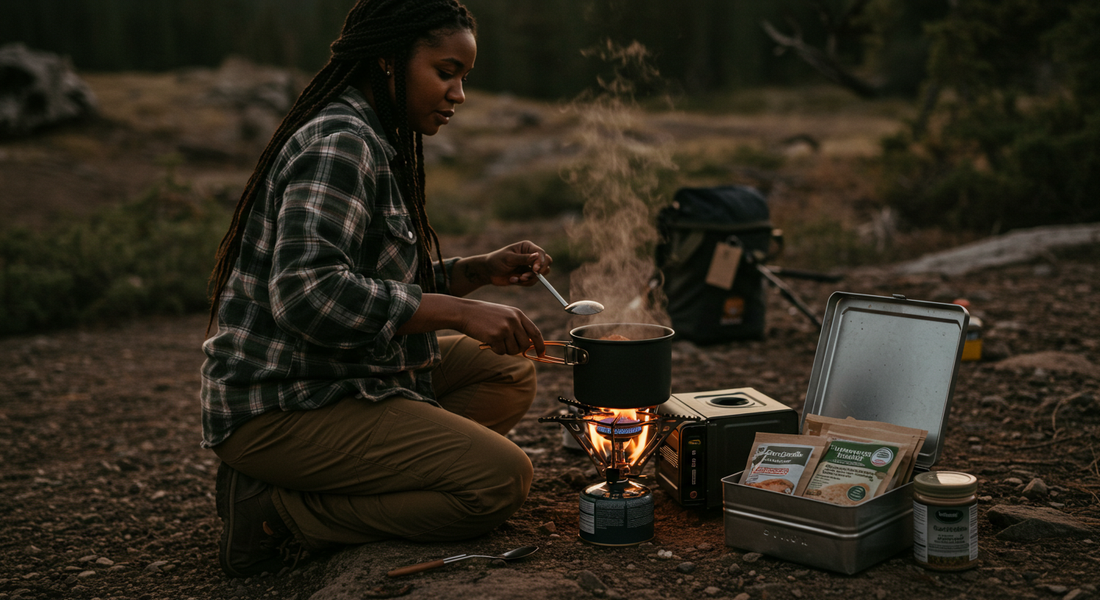
Beyond Canned Beans: A Practical Guide to Off-Grid Cooking
Share

In a crisis, a full pantry of long-term food storage is a critical asset. But living on cold canned beans and granola bars will quickly become a major morale crusher. A hot meal is more than just sustenance; it's a source of comfort, a taste of normalcy, and a powerful psychological boost that can make a difficult situation feel more manageable. Knowing how to cook without electricity is a vital preparedness skill.
However, safety is paramount. Never use fuel-burning appliances like camp stoves or charcoal grills indoors, as they produce deadly carbon monoxide. Always have proper ventilation and a fire extinguisher nearby for any emergency cooking solutions.
Method 1: The Camping Stove (Propane/Butane)
For most people, a simple camping stove is the most accessible and user-friendly off grid cooking methods.
-
Pros: Camping stove cooking offers incredible convenience and precise temperature control, similar to a gas stovetop. They are relatively inexpensive, easy to use, and can be set up in seconds.
-
Cons: The primary drawback is the reliance on a finite fuel source. You will need to store a significant number of propane or butane canisters to last through a prolonged outage. These canisters also need to be stored safely in a well-ventilated area, away from heat sources.
Method 2: The Biomass/Wood Stove
A biomass or wood-burning stove is a fantastic option for those who want to utilize renewable fuel. These stoves are designed to burn small twigs, pinecones, and other organic matter very efficiently.
-
Pros: The fuel is abundant and renewable. You can find small twigs and branches in your own backyard or a nearby park, meaning you'll never run out of fuel. They are also lightweight and portable.
-
Cons: They produce smoke and cannot be used indoors or on a balcony. They require more effort to manage the fire, and cooking can be slower and less precise than with a gas stove.
Method 3: The Solar Oven
A solar oven is a brilliant piece of low-tech engineering that harnesses the power of the sun to cook food. It uses reflective panels to concentrate sunlight into an insulated box, slowly heating it to temperatures high enough to bake, roast, and steam.
-
Pros: The fuel is completely free, silent, and limitless (as long as the sun is out). It's a completely passive cooking method—you can set your food in the oven and walk away for a few hours.
-
Cons: It is entirely weather and sun dependent. It will not work at night, on cloudy days, or in heavy rain. Cooking times are also significantly longer compared to other methods.
What to Cook: Simple Off-Grid Recipes
The key to successful off-grid cooking is simplicity. Focus on one-pot meals that are easy to prepare and require minimal cleanup.
-
One-Pot Rice and Beans: A classic for a reason. In a single pot, you can cook rice, canned beans, and dehydrated vegetables with a few spices for a hearty and calorie-dense meal.
-
Pasta with Sauce: Pasta is a great long-term storage item. You can easily boil pasta and heat up a jar of sauce for a quick and satisfying dinner.
-
Oatmeal or Grits: For a warm breakfast, simply boil water and stir in instant oats or grits. Add dried fruit or nuts for extra calories and flavor.
Conclusion: Build Your Off-Grid Kitchen
Choosing the right emergency cooking solutions depends on your environment, budget, and needs. The best strategy is often a redundant one—having a convenient propane stove for quick meals and a biomass stove as a long-term backup. Consider building a dedicated "off-grid kitchen box" in a tote that contains your chosen stove, fuel, a pot, utensils, and basic ingredients like salt and oil. Having this kit ready to go will provide a massive sense of security and comfort when you need it most.
